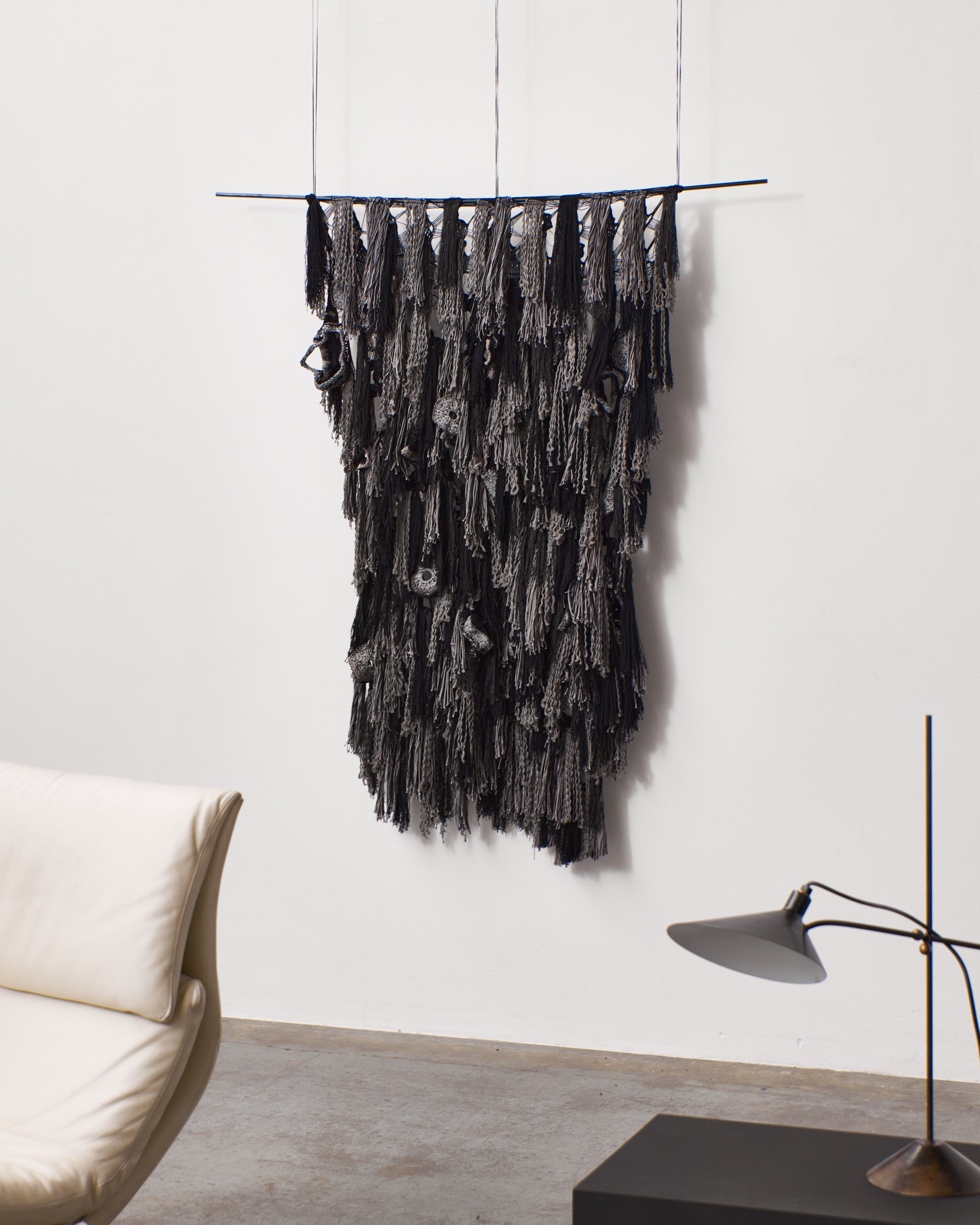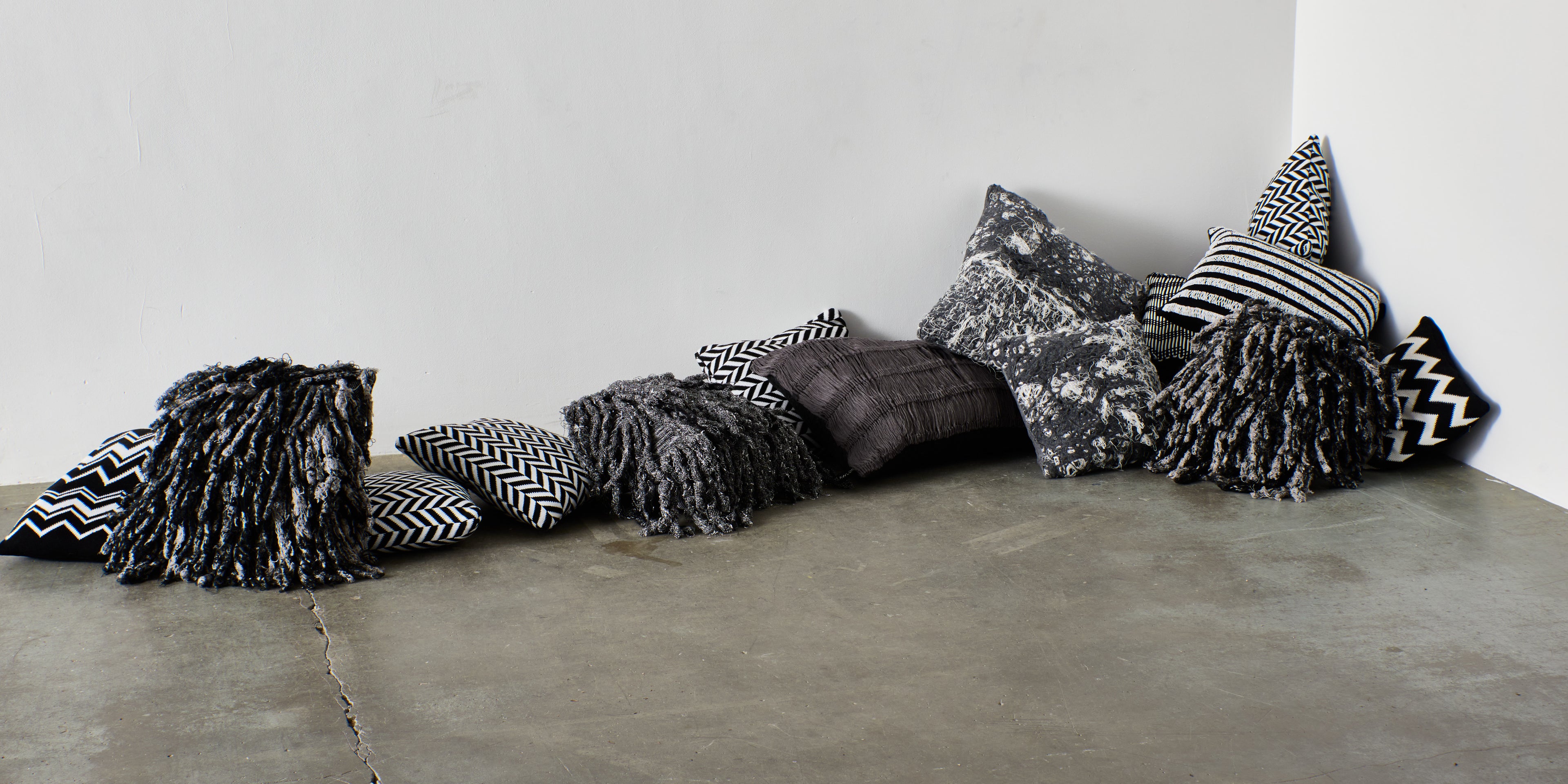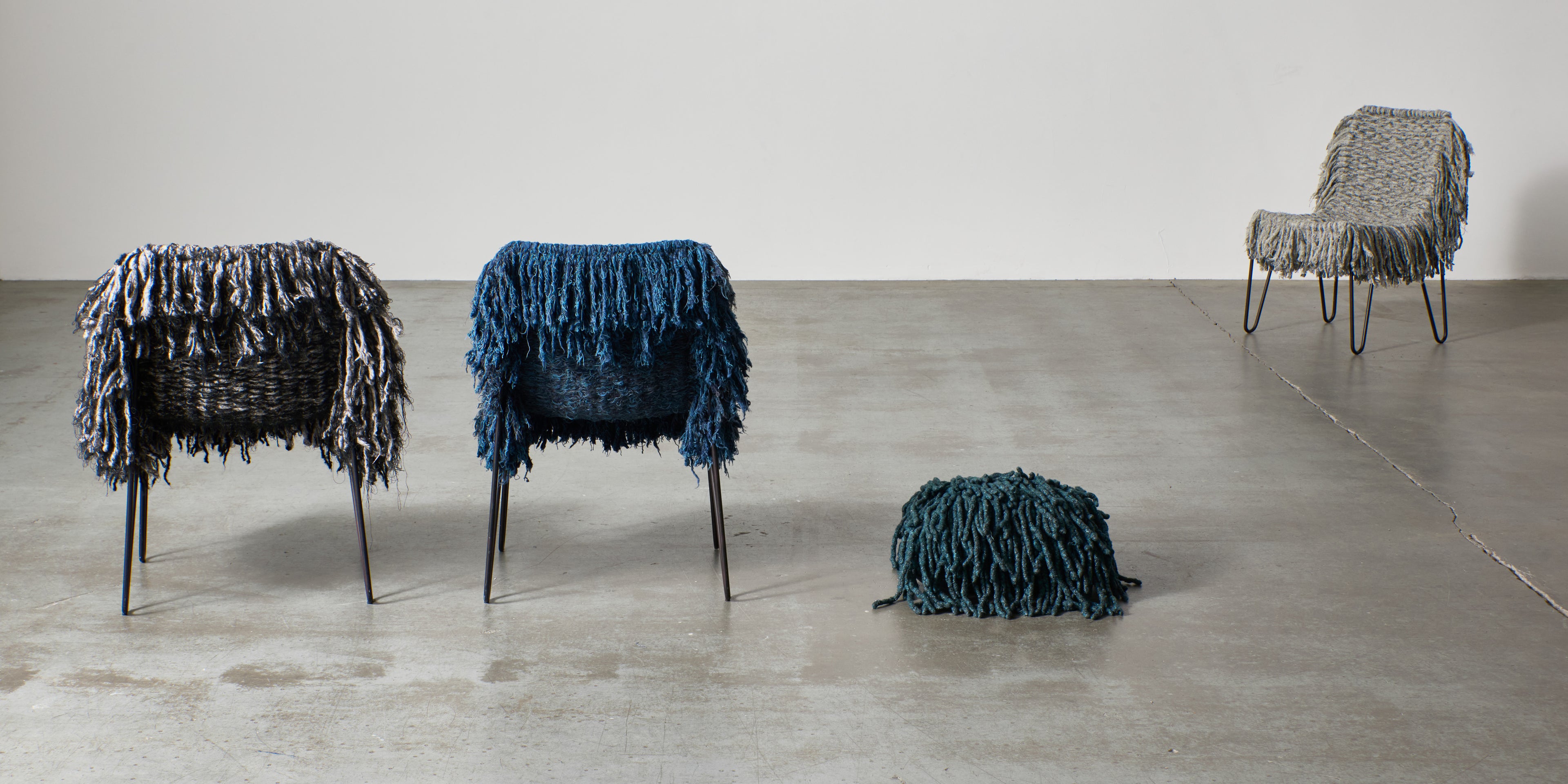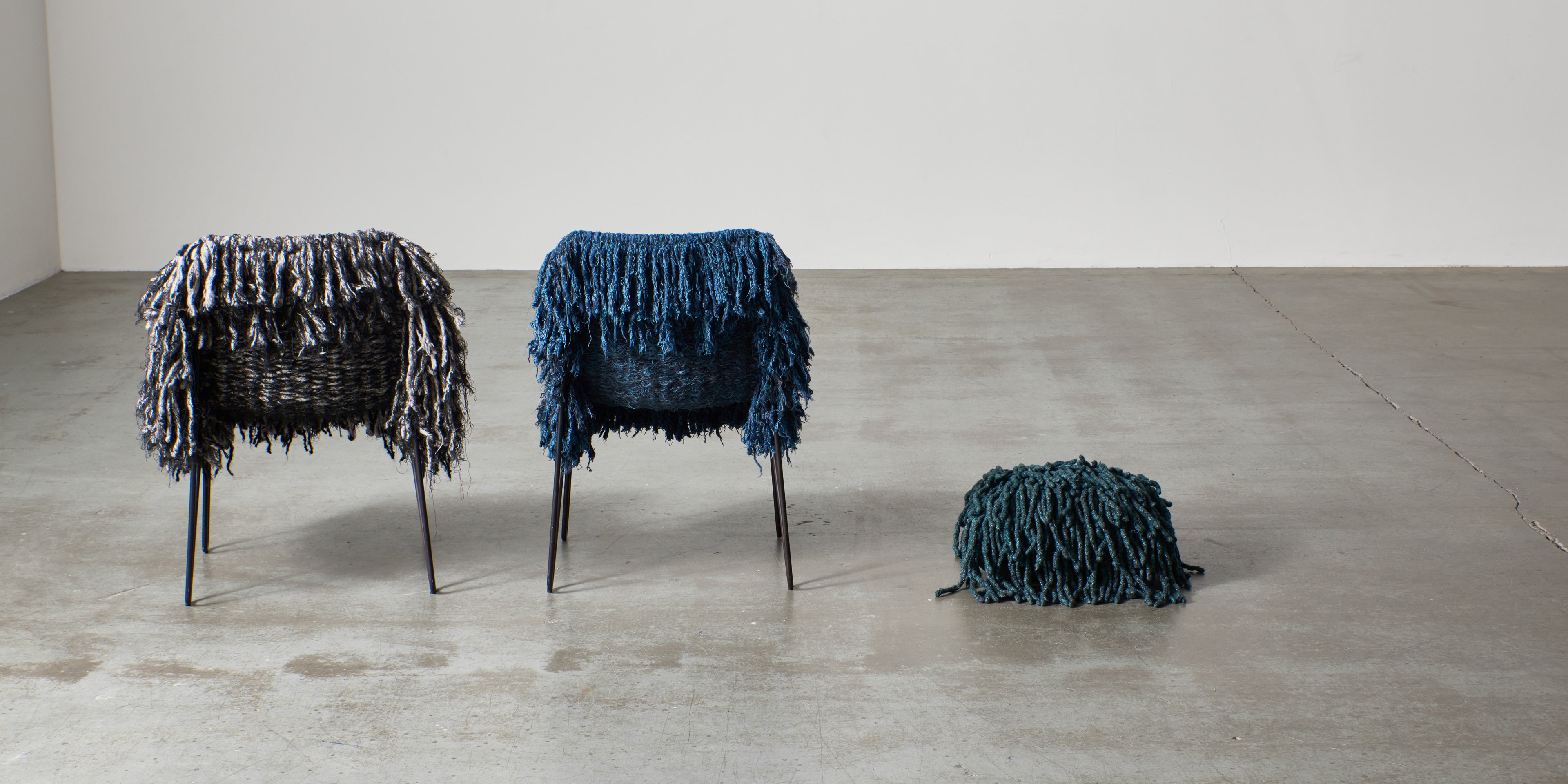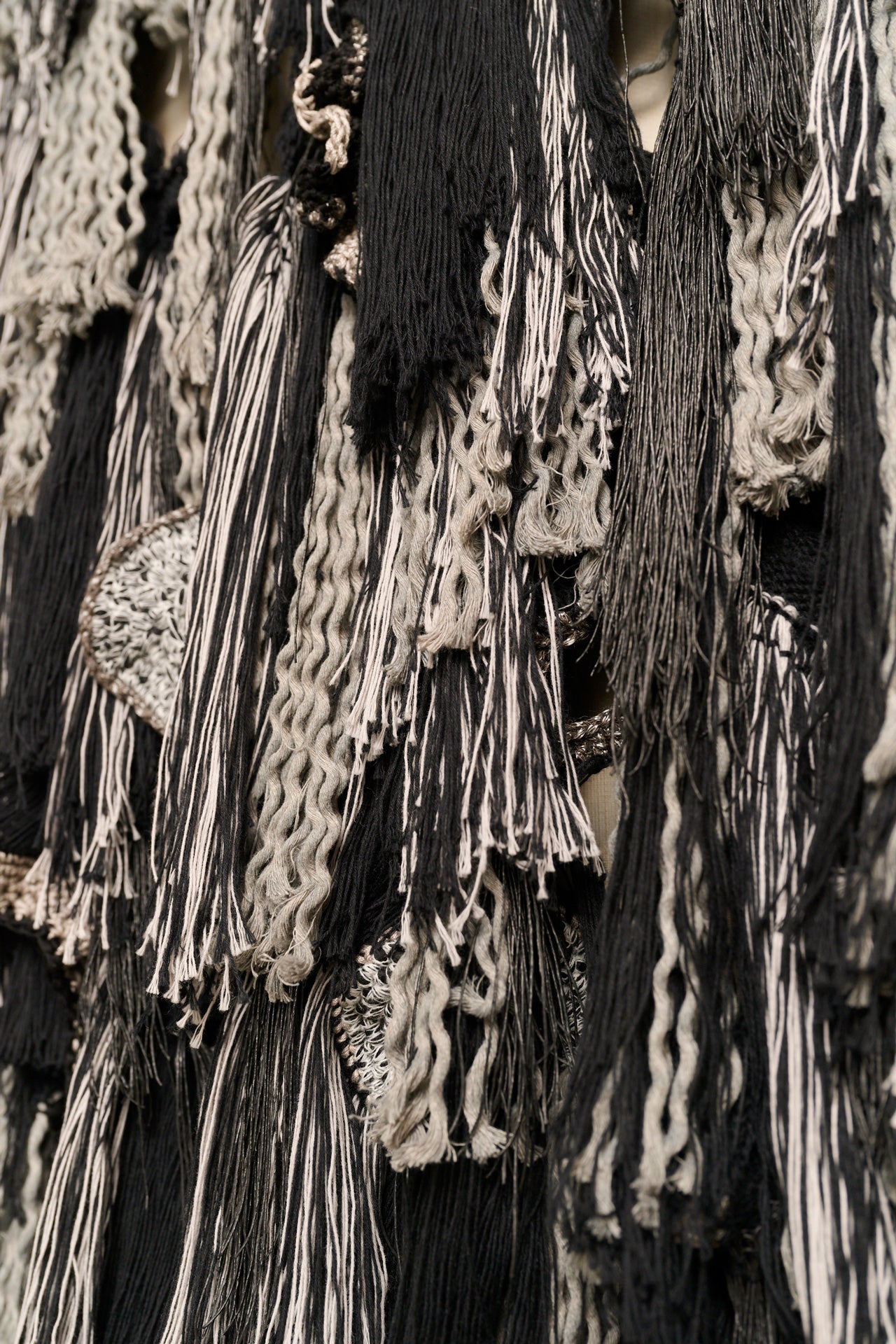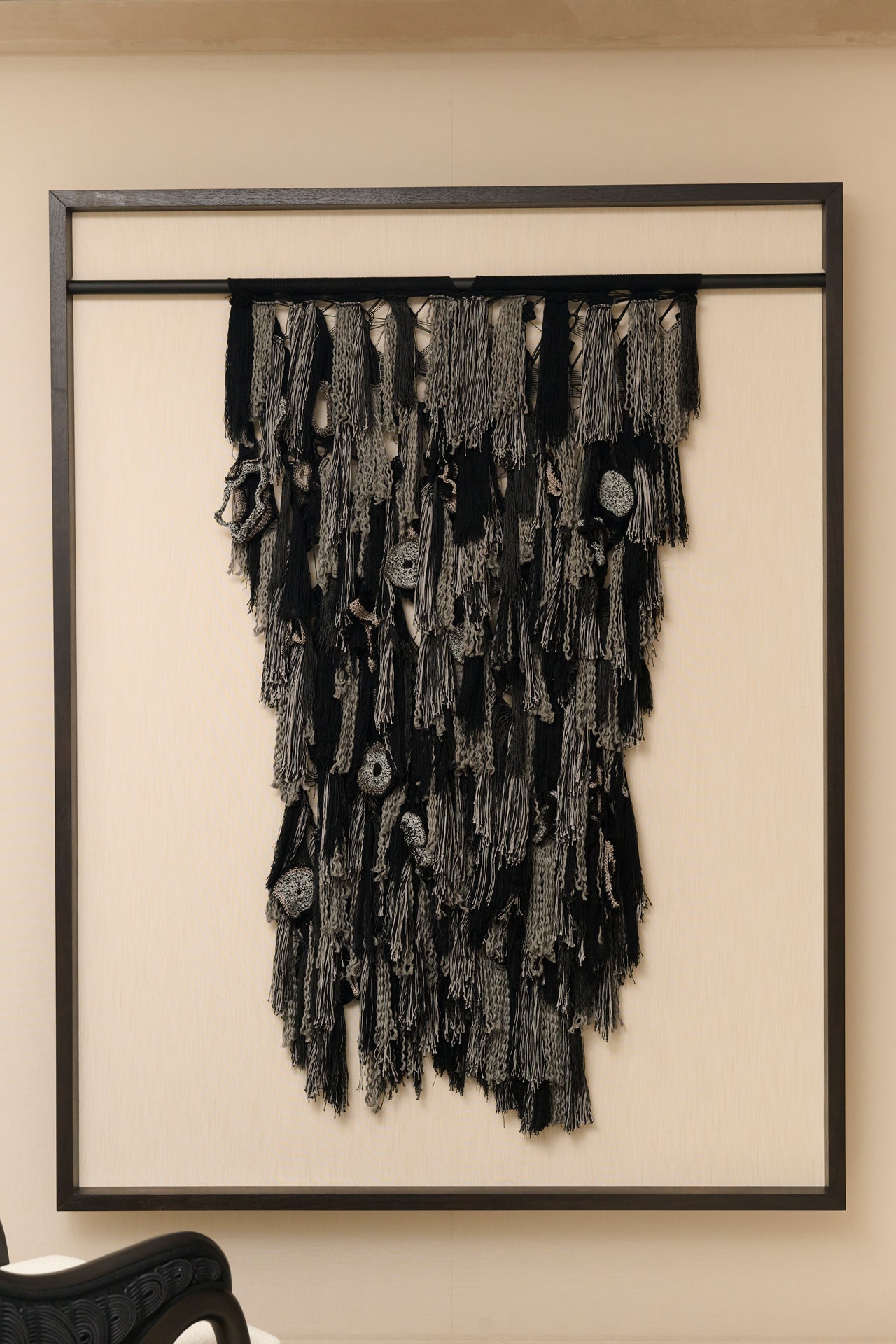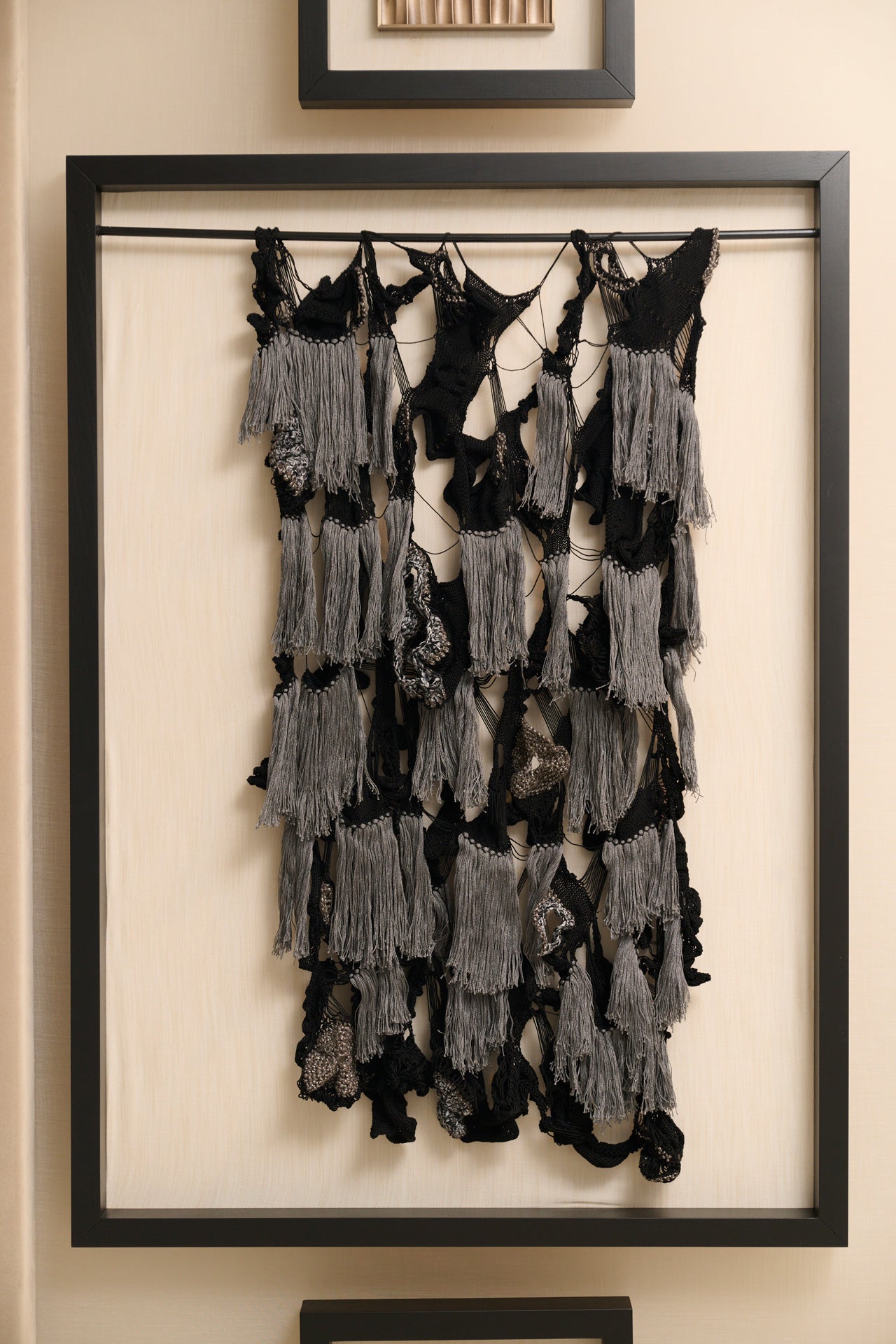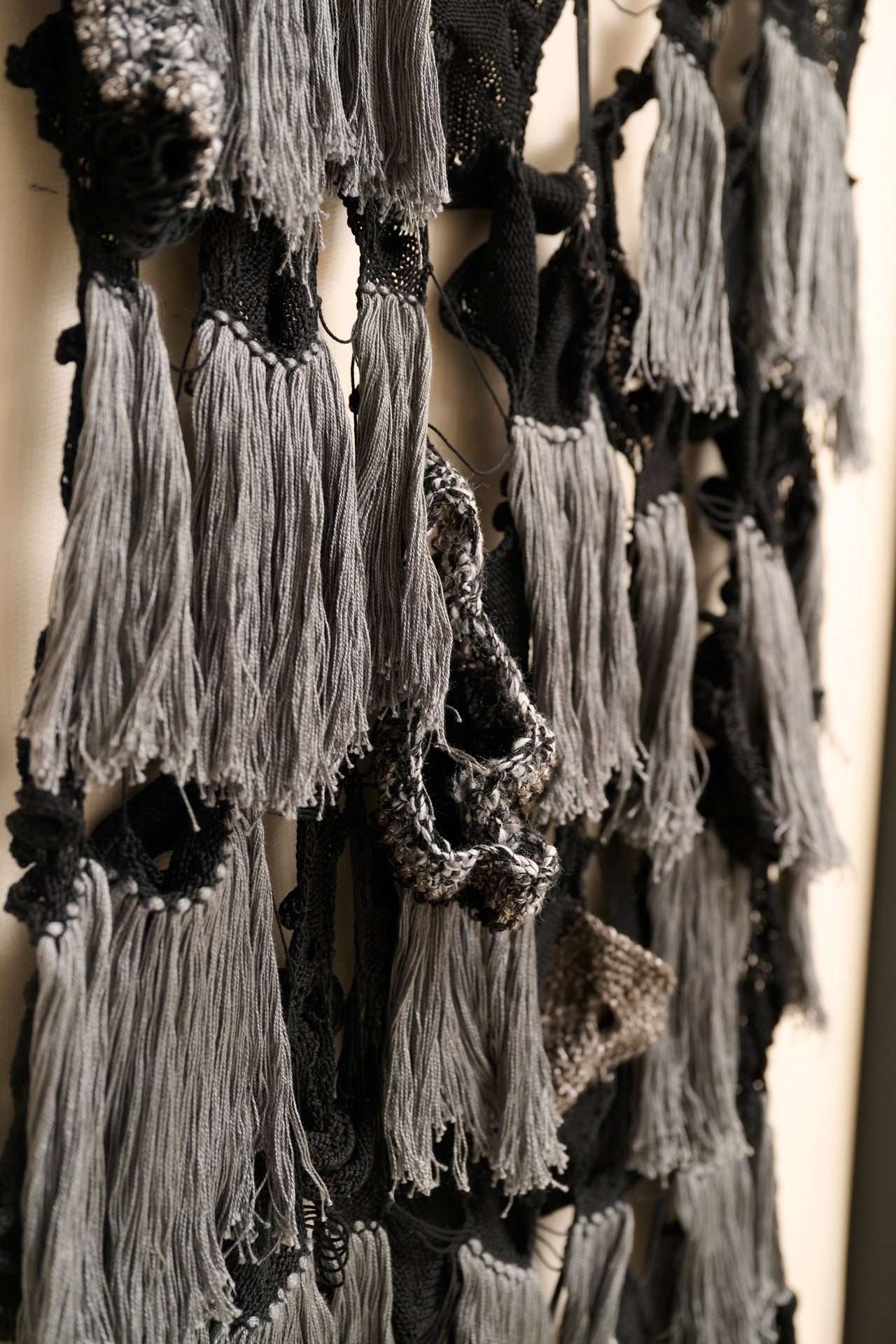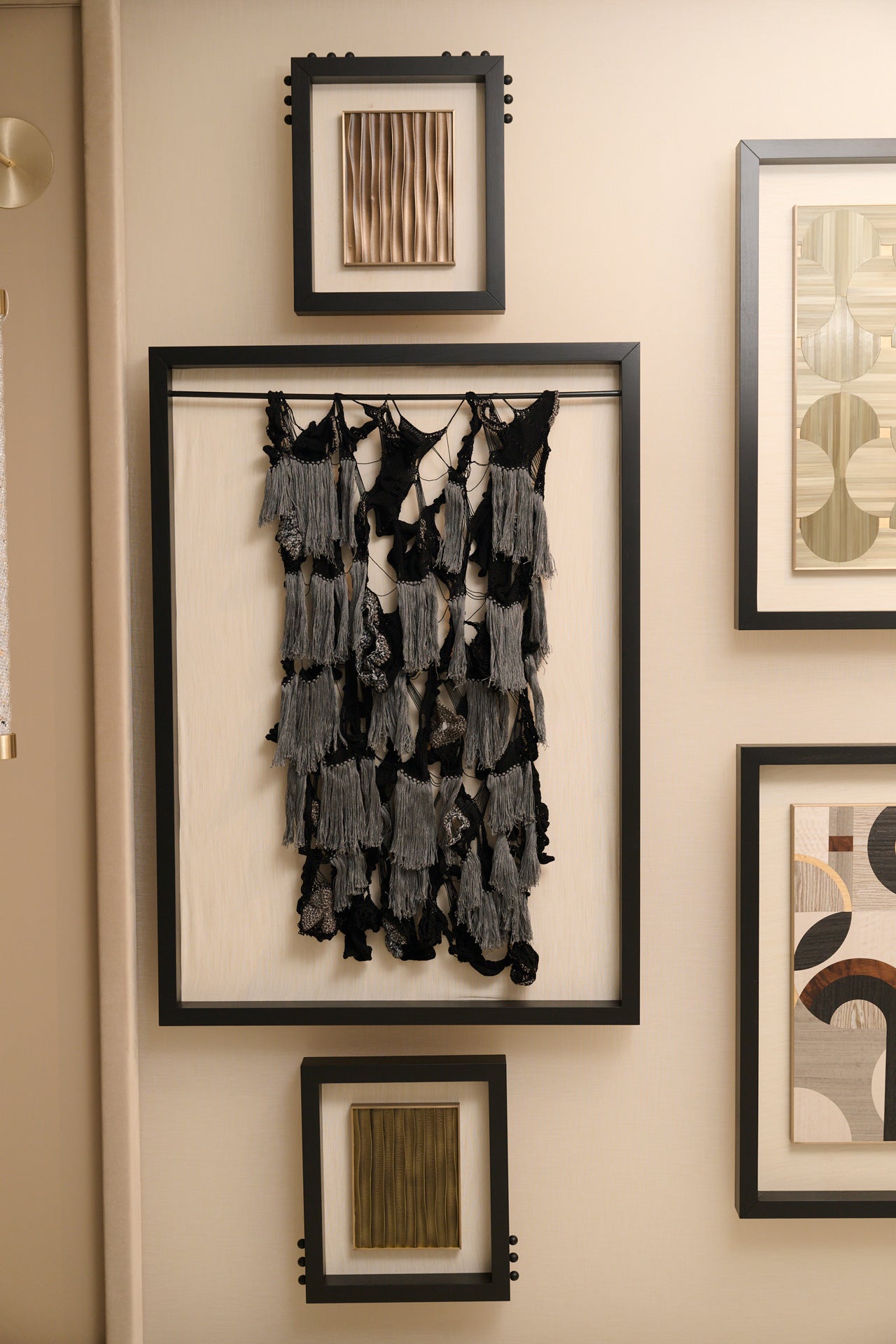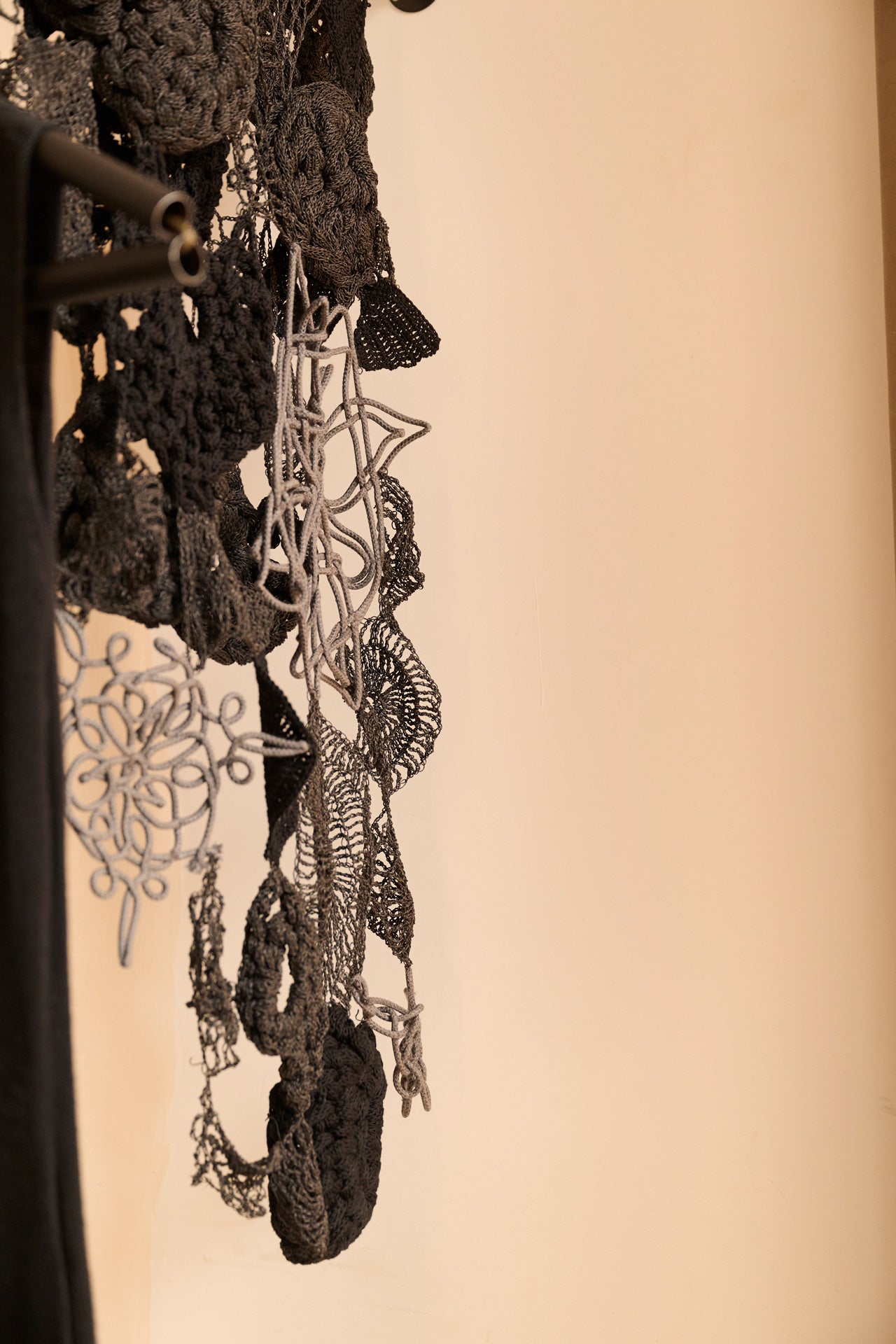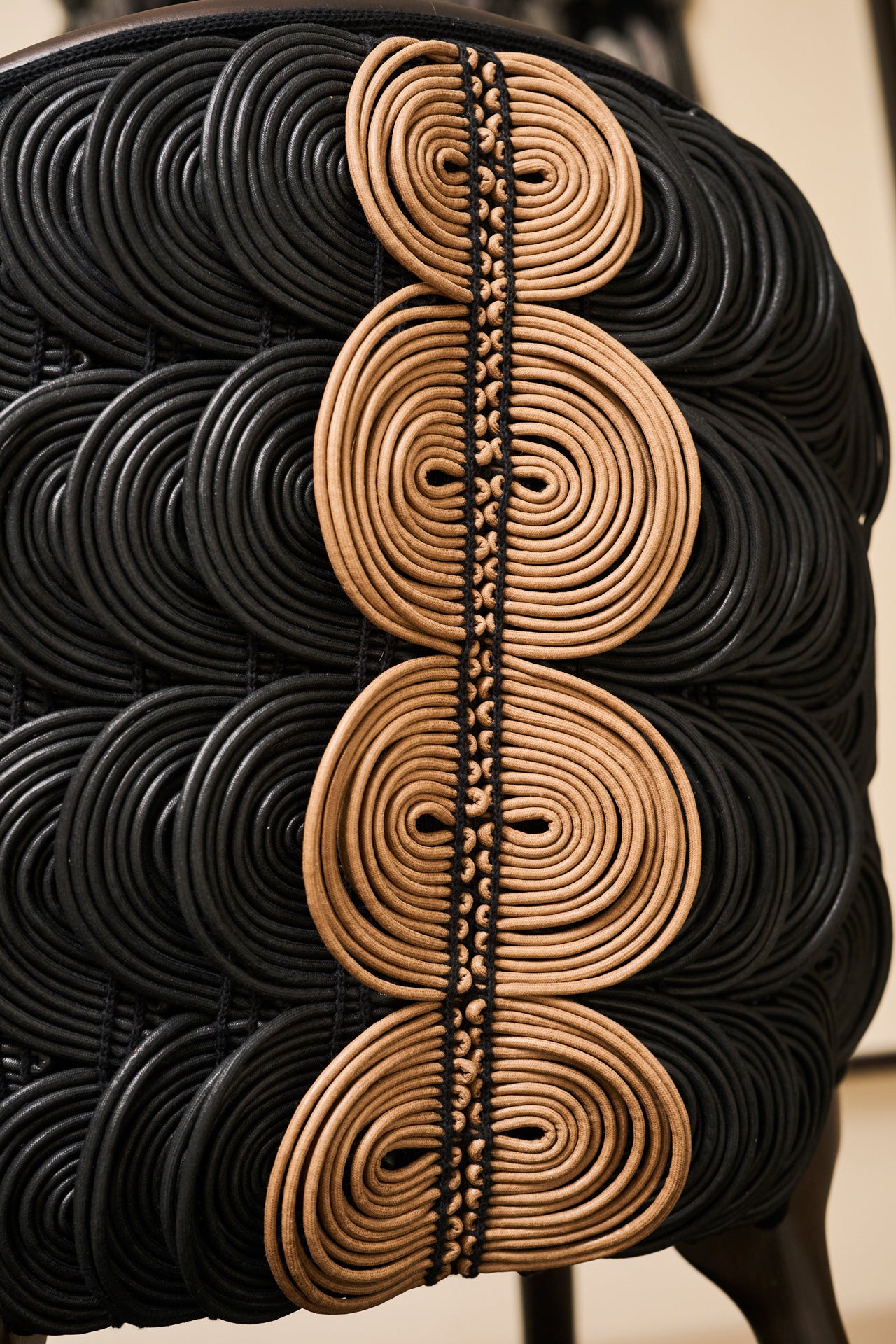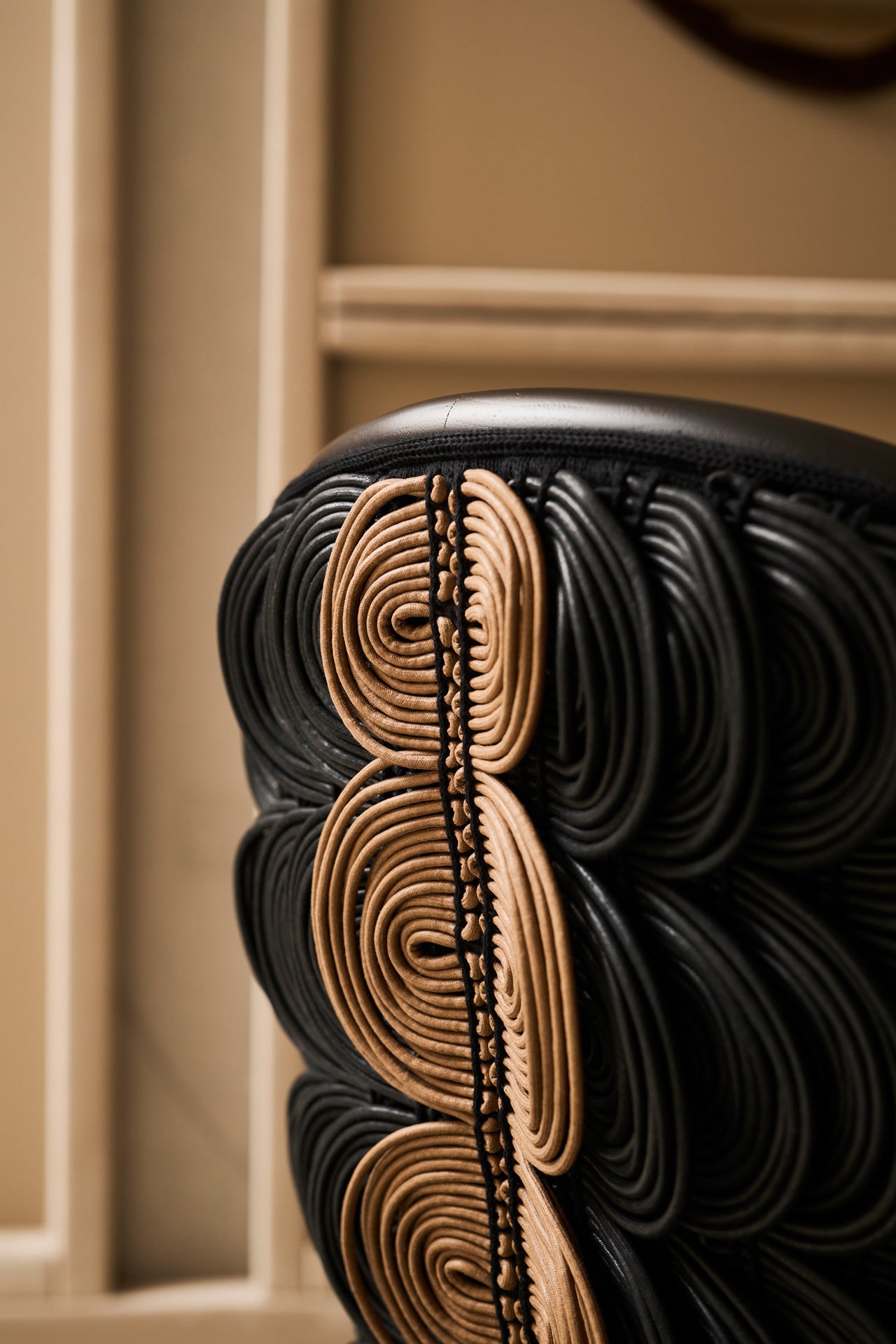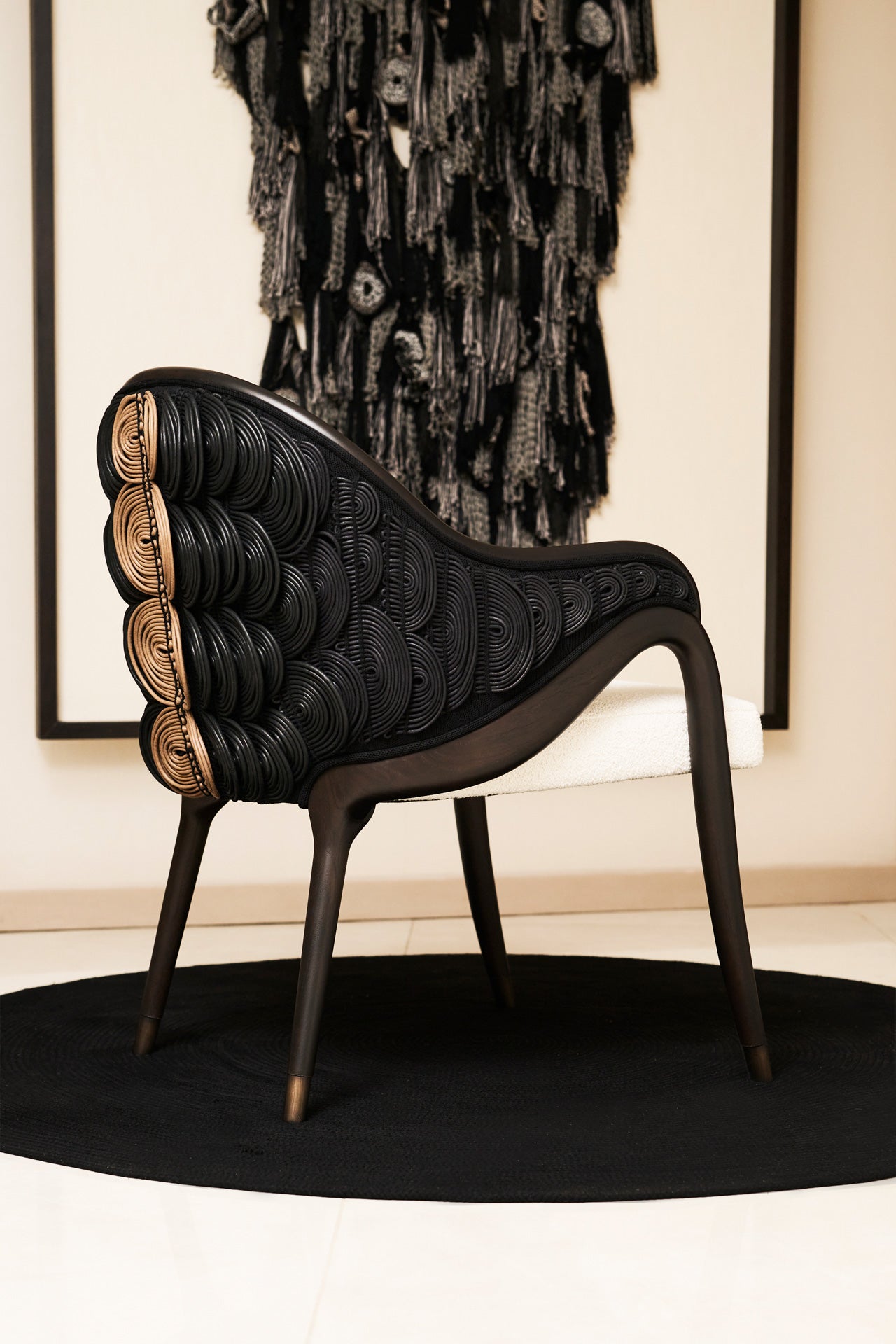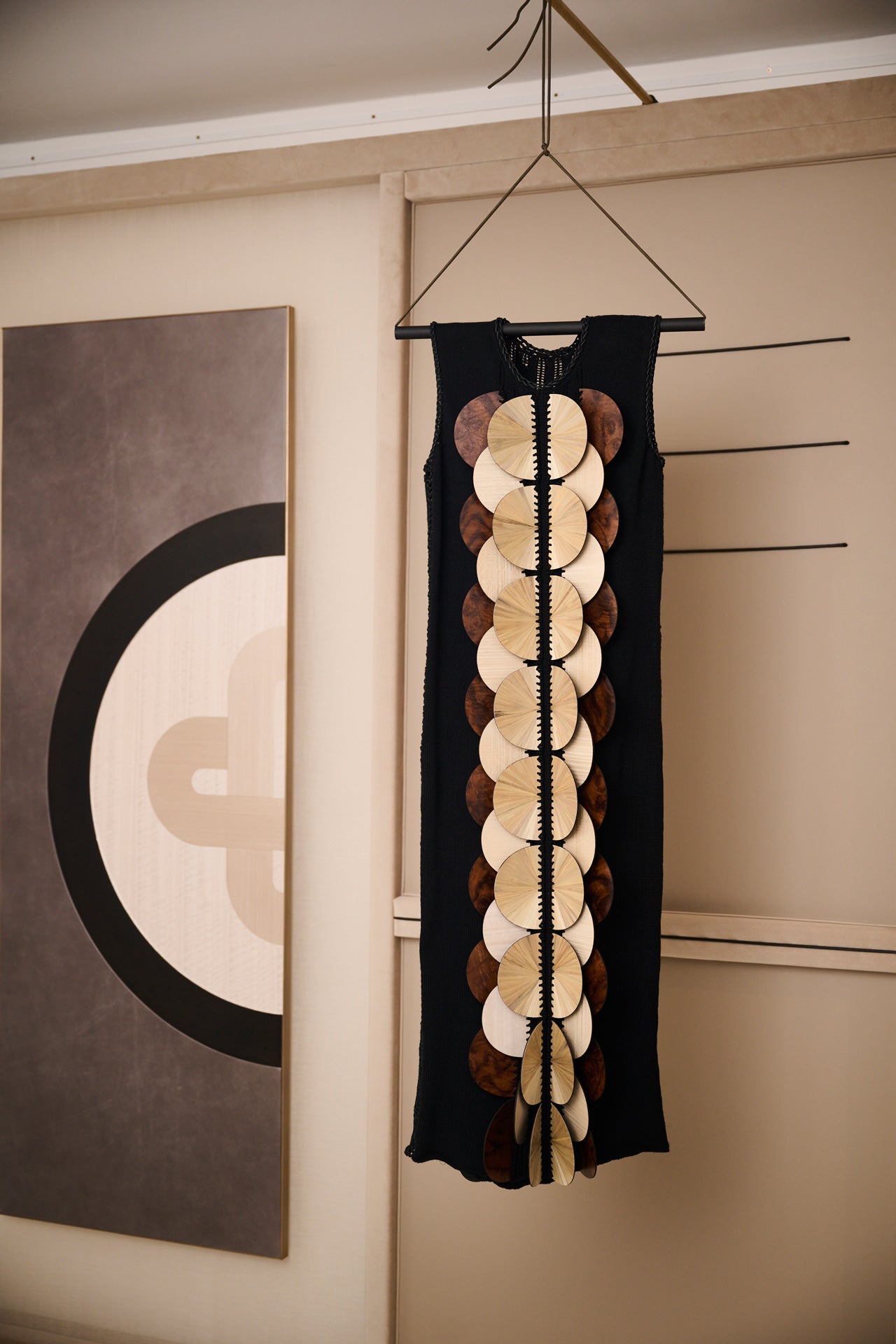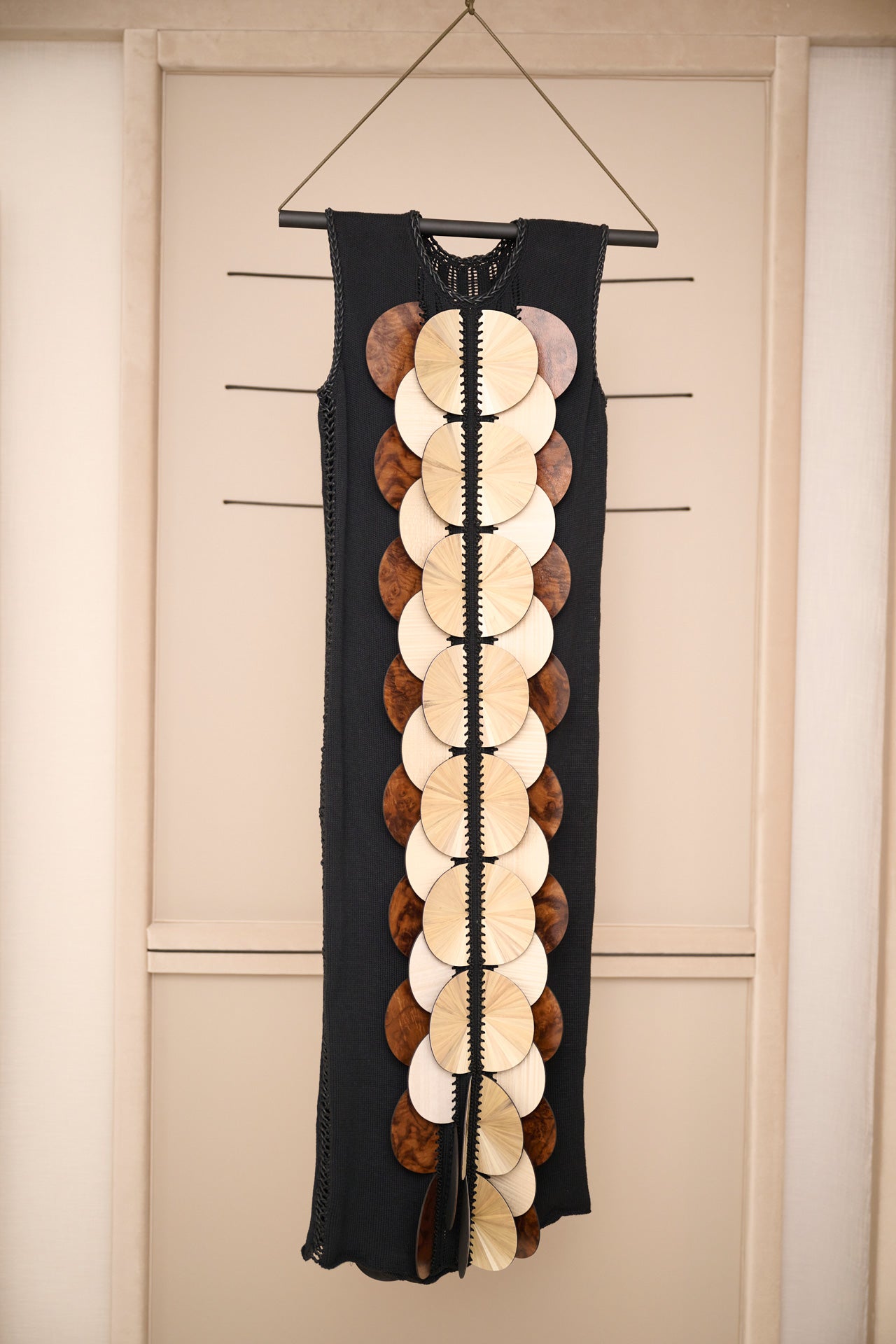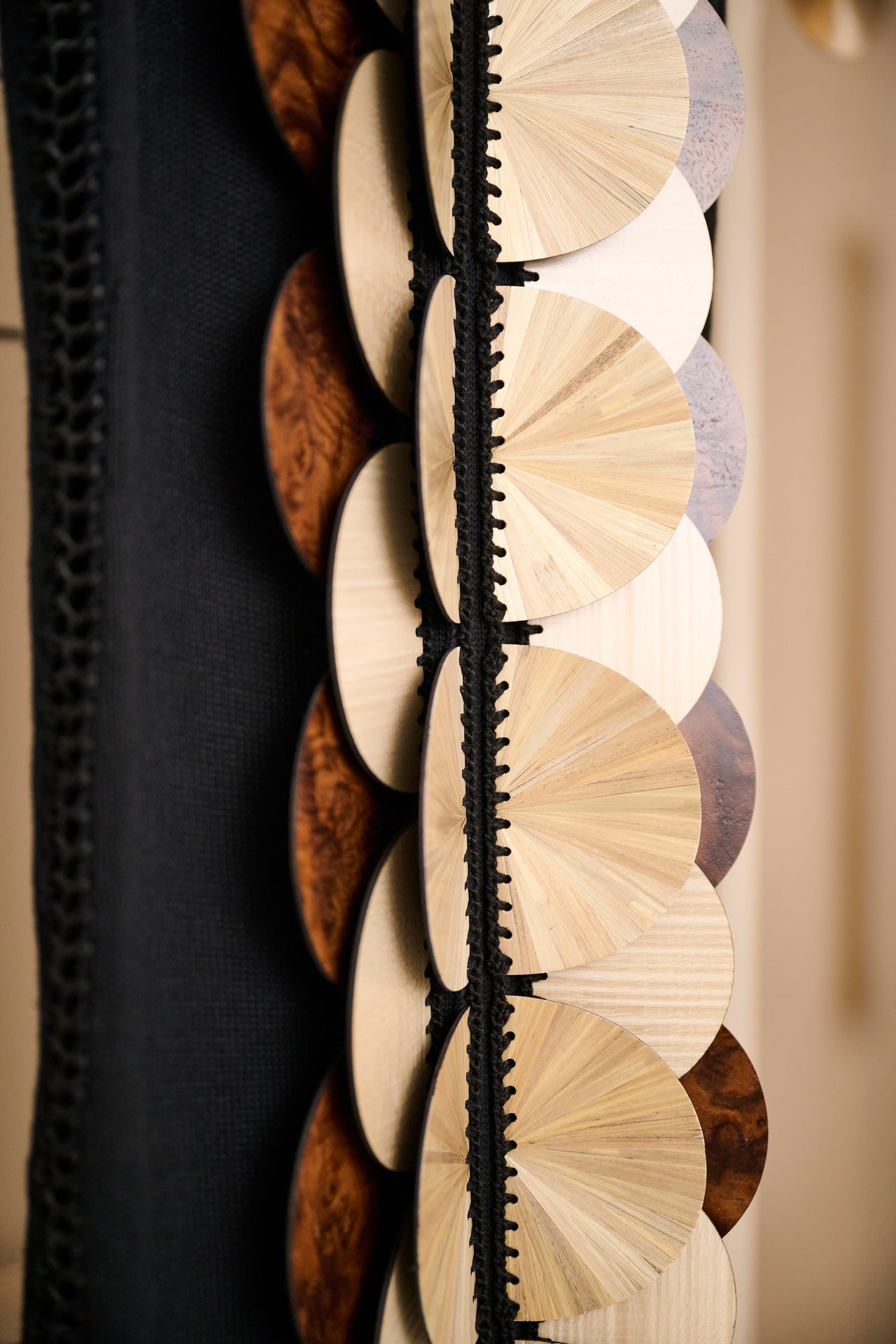-
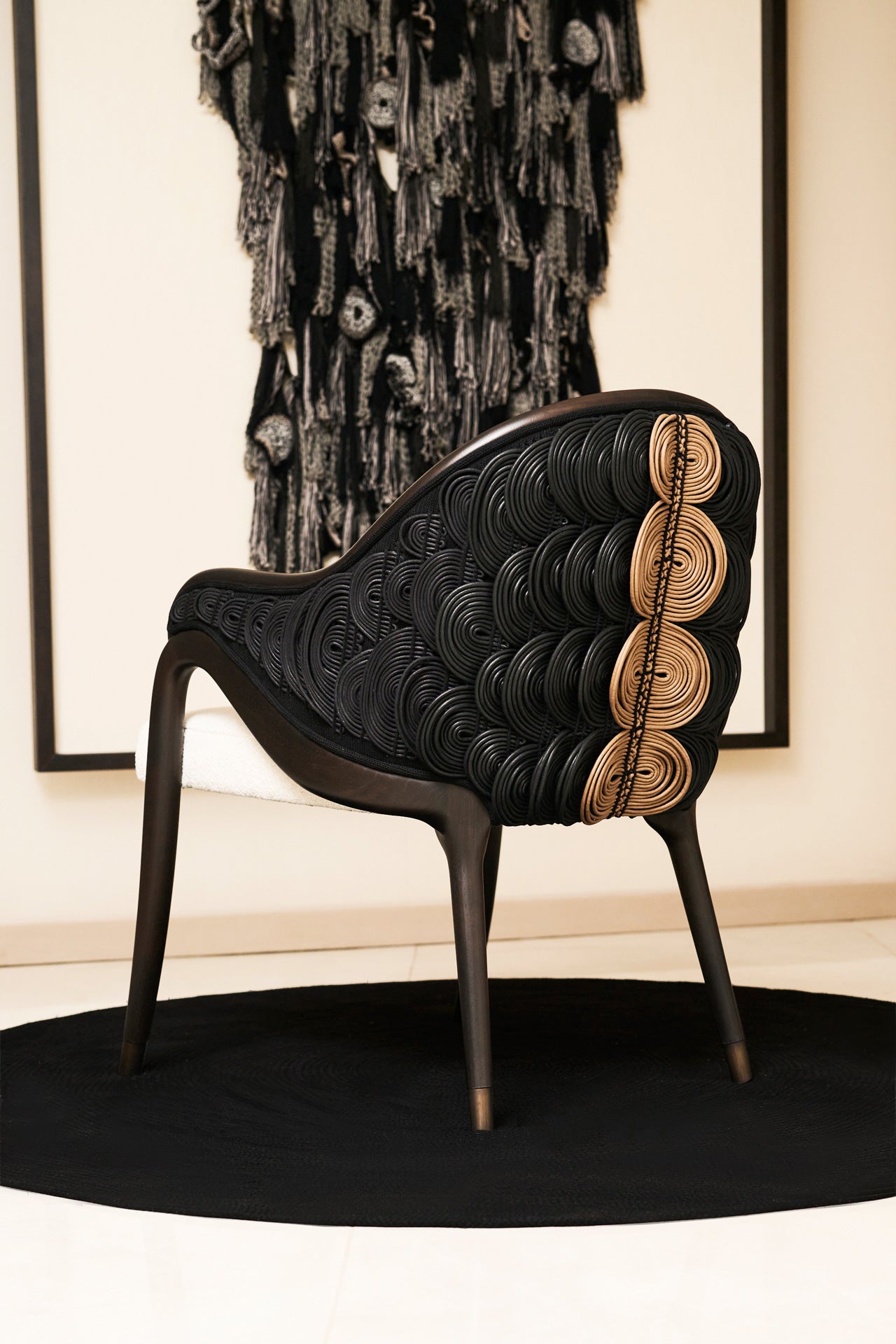
-
Strike a ‘Cord’: Dress Beyond the Thread
-
Shop the Collection
Strike a ‘Cord’ is an expression of a dressing room, designed and curated by Studio Altus, in collaboration with the designer Derek Lawlor and fine furniture makers Lacaze London. A studio collective of interior design, textile art, fashion and furniture, the installation celebrates craftsmanship by using a mix of materials 'beyond the thread.'
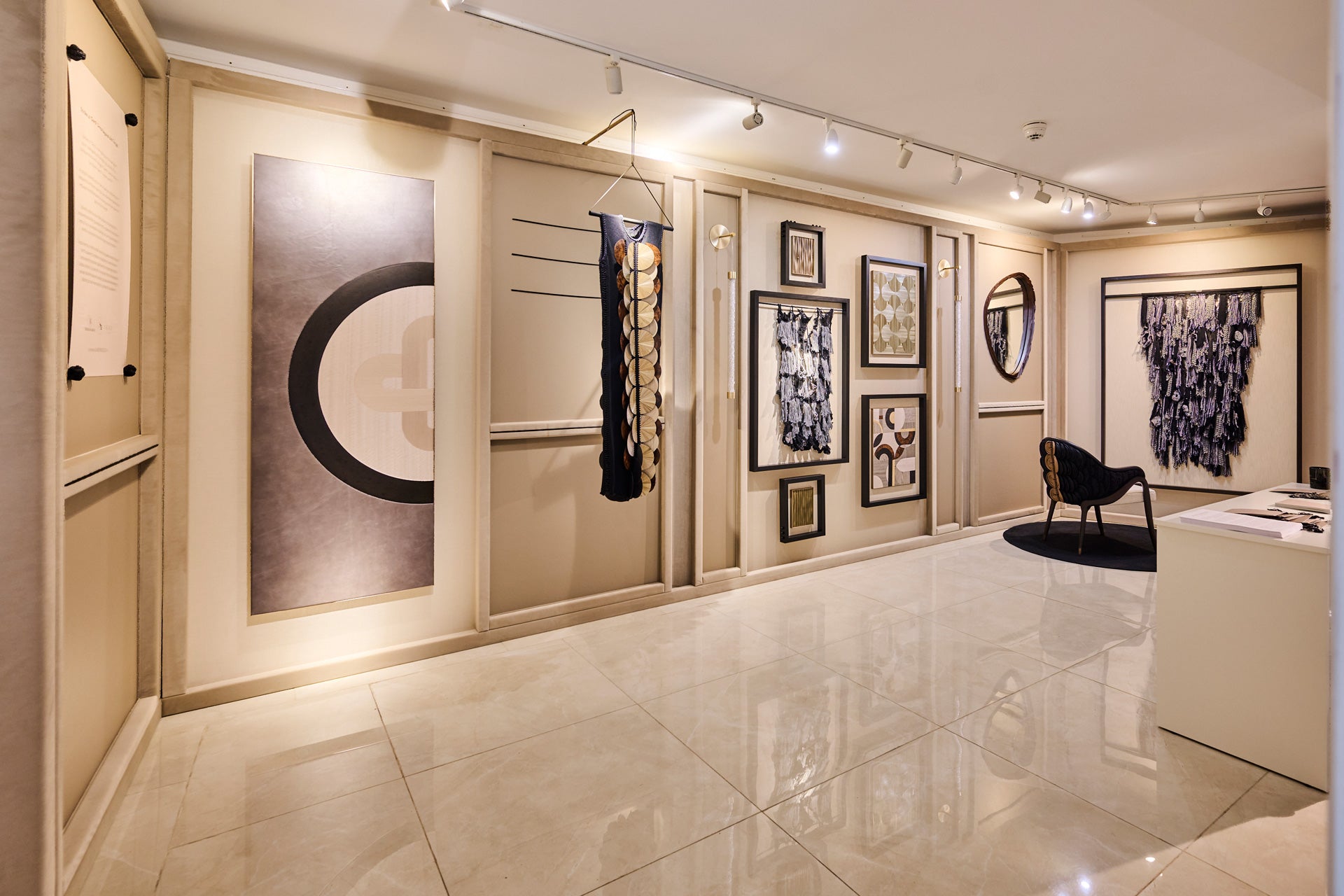
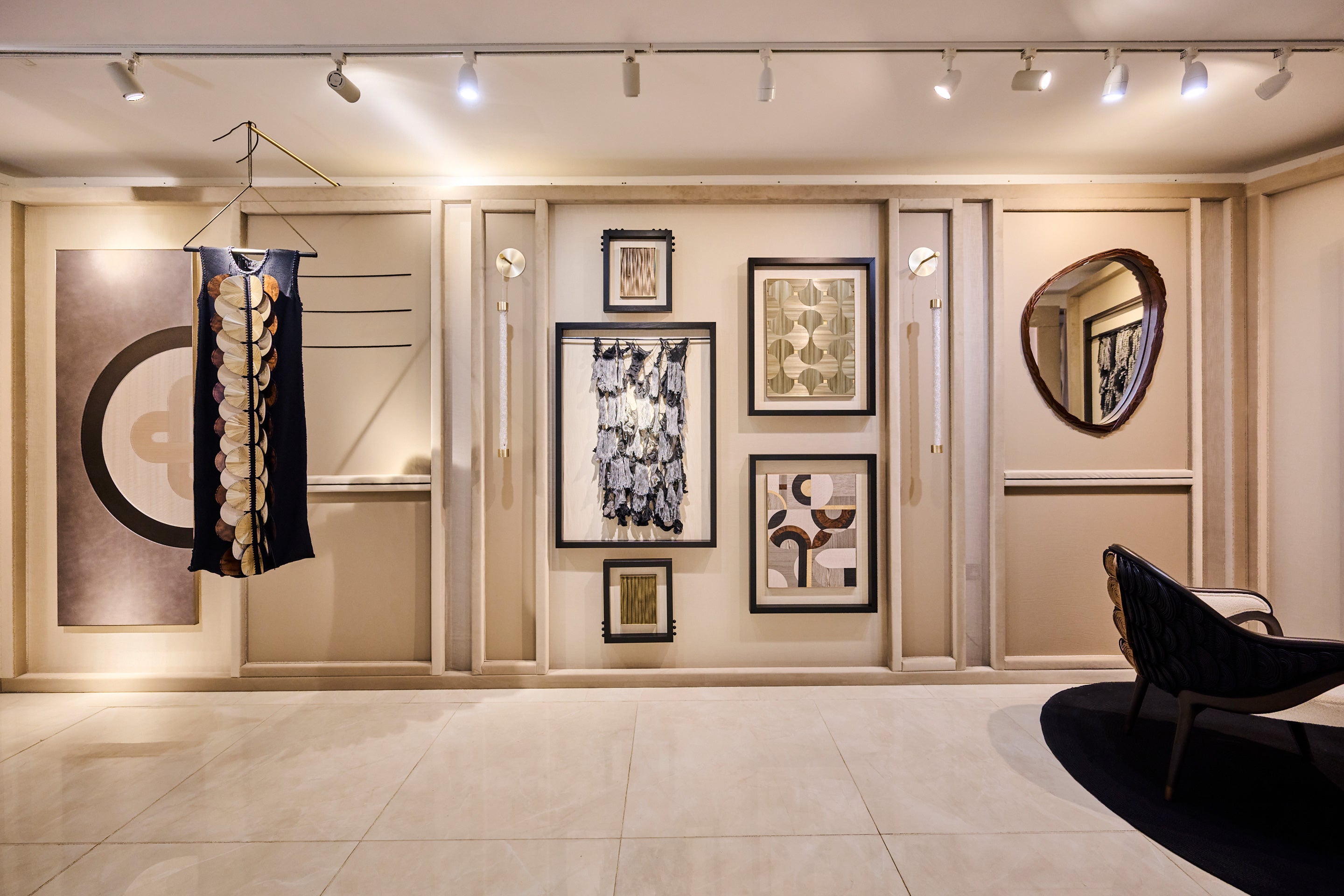

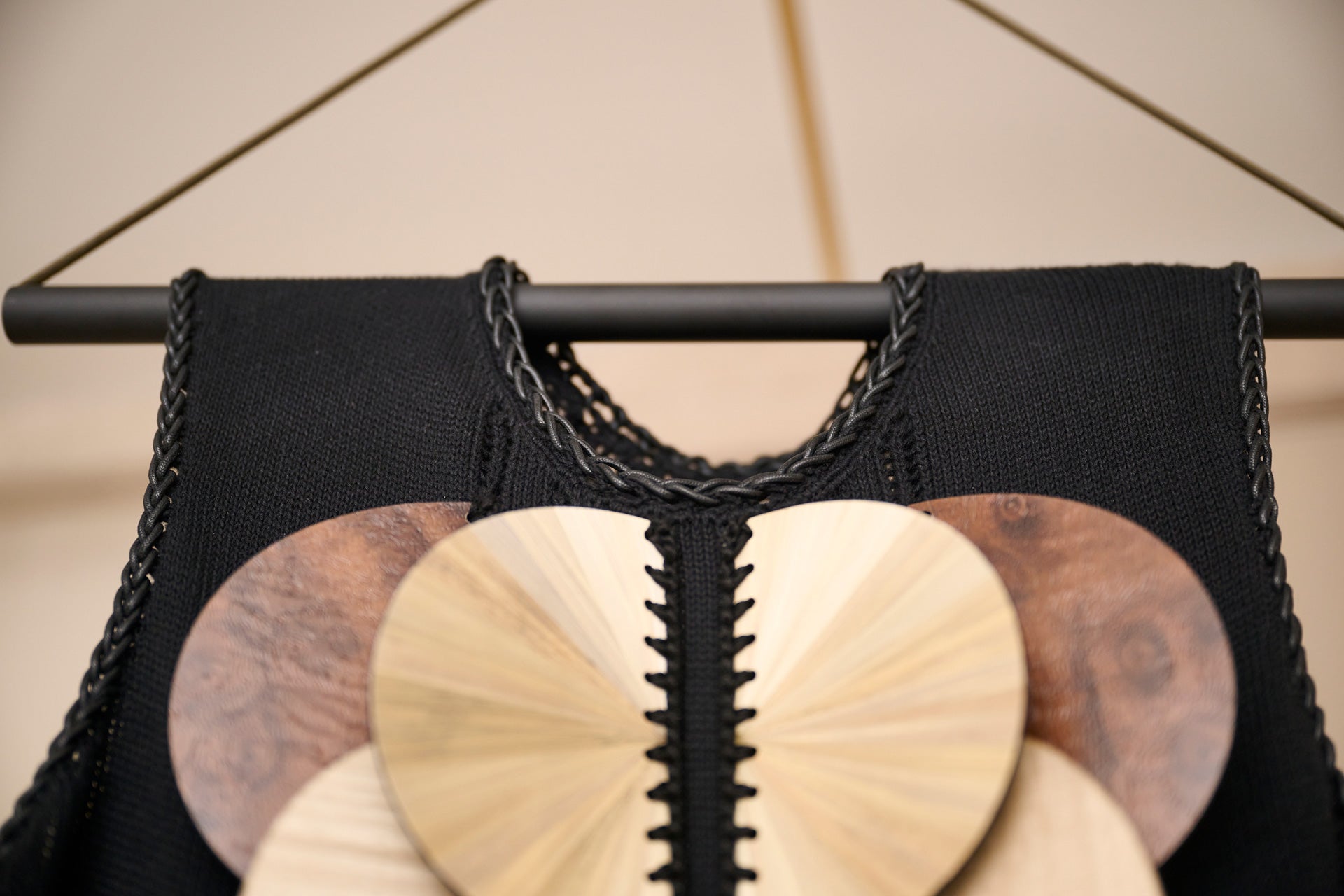

-
With over fifteen years of professional experience in residential interior design, Almeida felt it was time to reignite her personal creativity. “Six months ago, I was finishing a milestone project with Lacaze London. I realised that there are so many artisans who work with private clients behind the scenes and people rarely know about them. It made me ask myself, what could I do to celebrate this bespoke craftsmanship that often goes unseen?”
-
For five days, the pop-up installation located in the heart of Mayfair’s Design District reimagines a luxurious and intimate space across an evocative colour palette and accent materials executed as a masterclass in knowledge exchange. Curated as part of the London Design Festival, the concept behind this striking ensemble of virtuoso objects, bespoke designs and artworks originated with Anoushka Almeida – an alumnus from BA Textile Design at Central Saint Martins and now, with interior designer Jane Haslam – the co-founder of Studio Altus.
-
Thus, the idea for Strike a ‘Cord’ was born. Now, Almeida has galvanised what is one of the most compelling and accomplished synergies to debut at the festival. Taking us on a multidisciplinary journey, the setting is a knowledge-sharing experiment in patience and precision that found its roots in Almeida’s inspired reimagining of the Mad Hatters Tea Party. Lewis Carroll’s sense of fantastical surprise is evident in the ingenuity of how pieces have been conceived and presented, distilled down as they are to the simplicity of necessity yet patiently crafted and precisely finished by hand.
The Collection
-
The intricate techniques of Lacaze London including marquetry, veneering, gilding, liquid metal and hand-beaten metal interweave with the innovative cordwork techniques and lacework from Lawlor. Conversation starters include a covetable chair with an opulent cord work embellishment and elegant, stylised legs. A complimentary monochrome dressing table with bespoke tonal marquetry pattern in decorative round inlays plays on Lawlor’s signature shaped cord motif. The magnum opus is a sculptural dress inspired by Lawlor’s aesthetic reproduced in rich veneers.
-
Plus, every exclusive product, fabric, furnishing, upholstery is functional and beautiful yet also collectable, meaning that while this exhibition offers a window into a wonderland, it can also be yours to own – budget permitting of course. “Each method adds a layer of artistry and depth to our furniture, creating pieces that are not just functional but also a testament to human creativity and skill,” says Kay Chattun, the co-founder of Lacaze London.
-
In these masterpieces, the diverse processes and the extent of the collaboration sing. Lawlor studied with Almeida at Central Saint Martins, the prestigious University where he currently acts as joint course leader of the BA Textile Design. It’s clear that sartorial workmanship still influences both their thinking. Meanwhile, Lawlor’s distinctive DNA contrasts provocatively with Lacaze London – bringing tactility to sleek, refined surfaces. Using fabrication as his jumping-off point, he says of his lengthy tactile approach: “My artistic practice sees me creating my fabrics from scratch and then I work from that. I create, dye, spin, mix and often repurpose.”



